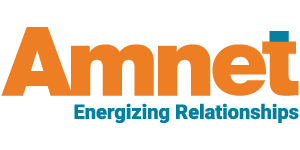Accessibility has become an important goal when it comes to equal opportunity in content delivery, and it is now governed by federal and international regulations. Amnet is a champion of digital equality, and we are able to provide expertise, implementation, scalability, and compliance with accessibility regulations, and all within your budget.
Being at the forefront of publishing services for 20 years, Amnet has had conversations with many leading publishers and accessibility experts to understand their views, plans, and milestones.
As part of this exercise, Frances Daniele, Amnet’s Director of Accessibility, spoke to Jonathan Thurston of well-known and highly regarded publisher Pearson Education.
Jonathan Thurston: Head of Accessibility Product Management, Pearson Education.
Currently responsible for the execution of Pearson’s Global Product accessibility initiative and overall management of their higher education accessibility requirements and standards. A design thinker and creative problem solver with 20 years of experience, his specialties include recruiting for change, building partnerships and ultimately developing simple and scalable solutions for complex situations.
Frances Daniele(Amnet): We’re here today with Jonathan Thurston (Head of Accessibility Product Management for Higher Education Courseware at Pearson) to discuss some thoughts on accessibility, his experiences with developing accessible courseware, and Pearson’s Higher Education plans for the future. So just to get started, we did a little research on Pearson’s website and came across the sustainability plan where accessibility is highlighted. Can you tell us a little bit about the focus areas?
Jonathan Thurston: Hi Fran, of course and thanks for the opportunity to share a bit about our efforts towards delivering “born accessible” products and content. Accessibility is a big deal for our customers, and as such it is a big deal for us. Over the years, we have had a tremendous amount of engagement with our customers on this topic and many have made it clear that they need their educational products and courseware to align with universal accessibility standards (WCAG 2.0 AA). We take this requirement seriously.
Amnet: Has there been a special task force created to get this implemented?
Jonathan: Absolutely, we run a multifaceted accessibility program to scale all the various interrelated and intertwined aspects of accessibility into the development of our higher education products. Some examples include reviewing platforms against the standards and remediating any areas that are not aligned, looking at our legacy content and bringing it to standard, embedding accessibility into our future-facing development to ensure that we’re creating best in market products that are born accessible, and implementing robust internal QA to ensure that all products align with the standards. This is a massive and targeted effort.
Amnet: I would say a full 360!
Jonathan: Our program is holistic and was designed very carefully to be such. Our progress is allowing us to look towards the future where all of our offerings will be aligned with accessibility standards.
Amnet: Are there specific challenges that you’re still facing in any of these areas?
Jonathan: There are always challenges. I believe one key to success is identifying the challenges, coming up with good solutions and the best way for them to be executed.
Amnet: Well, I’d say having the QA is a good way to face the challenges. Given the issues you are having with your content you are having them QA’ed, correct?
Jonathan: Indeed. Accessibility Quality Assurance is extremely important and baked into our workflows. We partner with third party experts to review our content and platforms as part of this validation.
Amnet: Is the Pearson content in higher Ed born accessible? What changes have you made to the workflow to make that happen?
Jonathan: A good example might be our PowerPoints. These files need to be structured and described in order to be considered properly accessible. We have standardized workflows and created templates to follow to ensure content creators are equipped to create accessible PowerPoints. A huge factor to our success will be to scale and standardize our activities.
Amnet: And have you also provided your content creators with guidelines to follow?
Jonathan: Absolutely. Let me share them with you too. In fact they are open and public and we refresh and update often.
Amnet: So it’s public and accessible to all?
Jonathan: Yes, in fact, one of our competitors approached us and asked if they could model their guidelines after ours and we agreed.
Amnet: That’s terrific! and what else you are offering your clients? Or what are you encouraging your clients to have as deliverables for your content? For instance, for schools, do you encourage them to request accessible EPUB, PDF, PPTs. What kind of deliverables are you offering?
Jonathan: That’s a good question and depends on the product. Pearson produces a tremendous number of diverse products in different educational fields and genres. Depending on the specific product you may encounter different challenges with accessibility.
Disclaimer: This is to inform readers that the views, thoughts, and opinions expressed in the article belong solely to the author, and do not reflect the views of Amnet.
